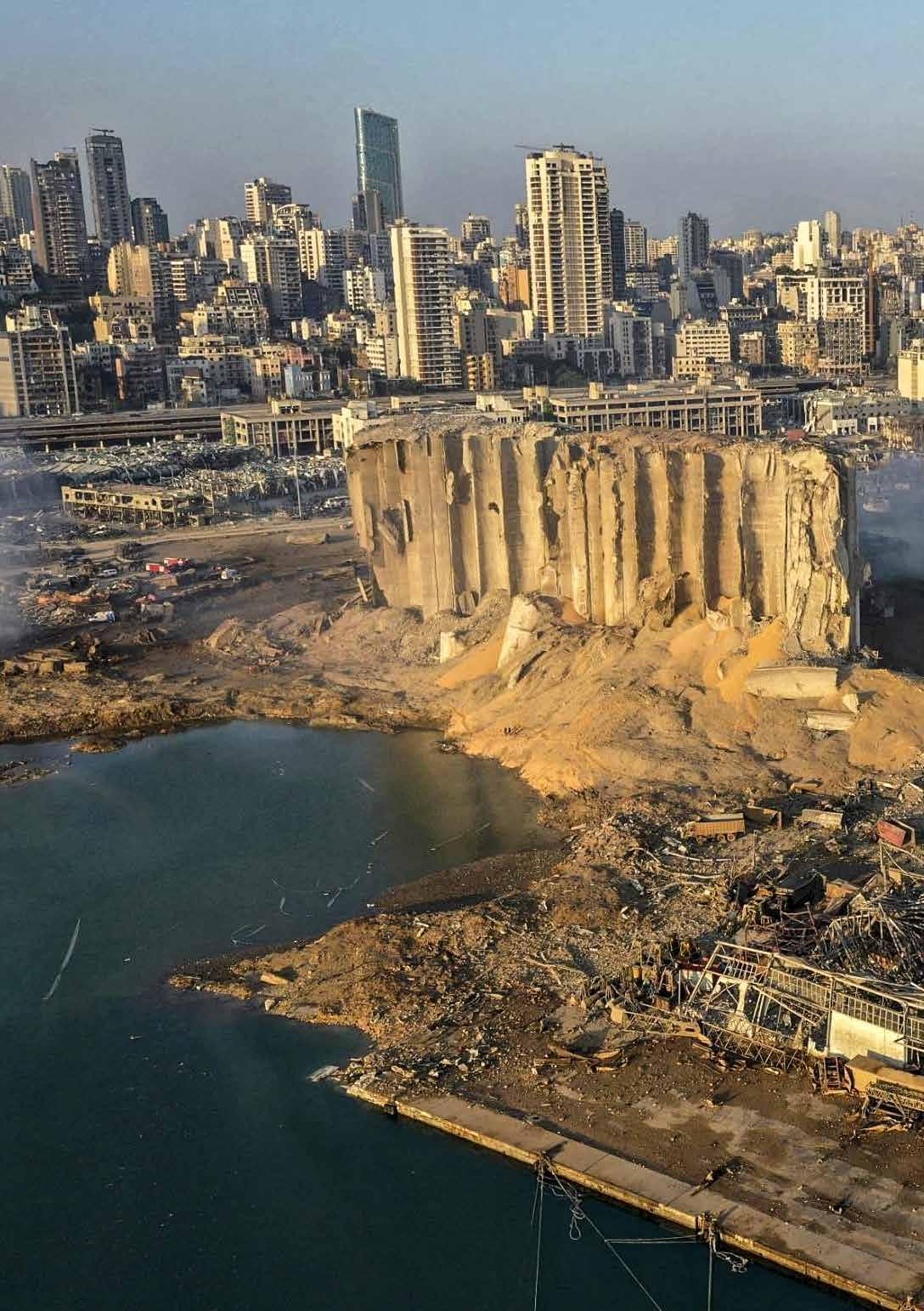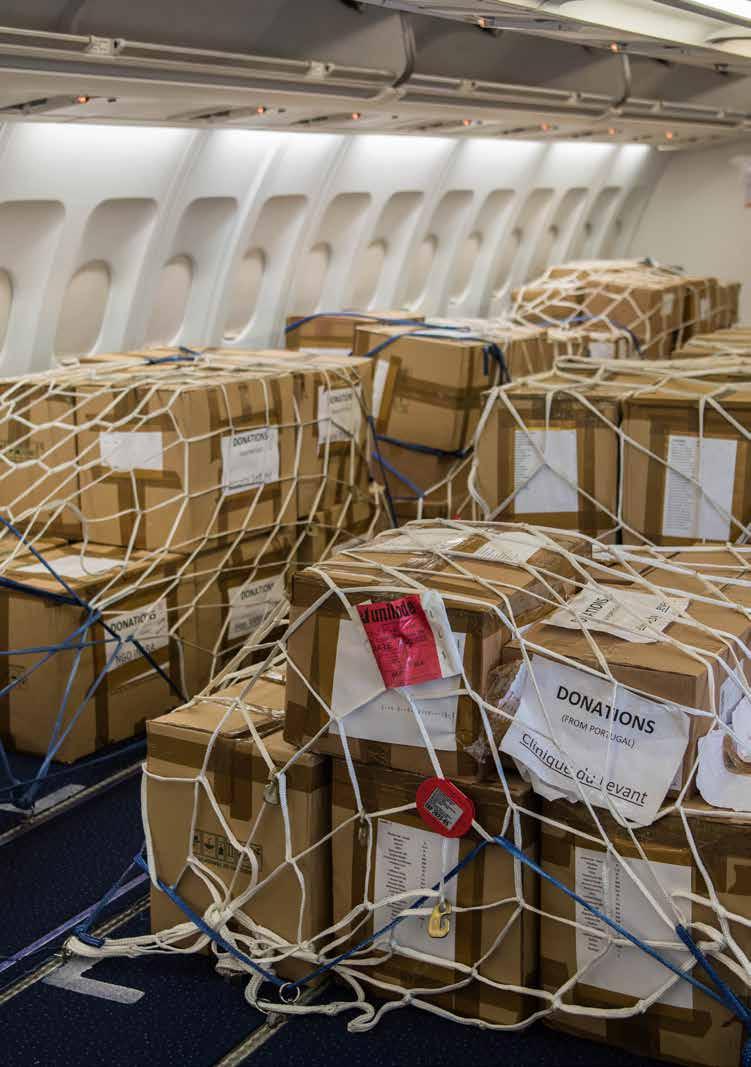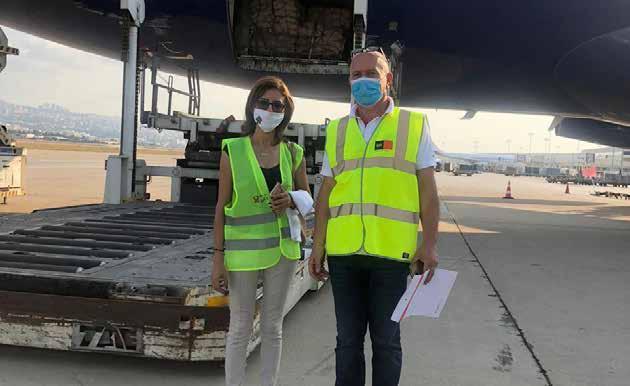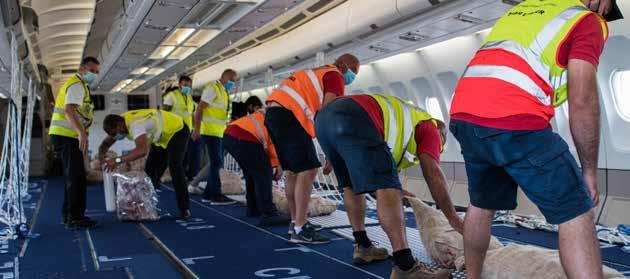
8 minute read
9H-SUN…. A Flight of Relief to a Devastated City
Interview with Capt. Charles Pace Director General for Civil Aviation Civil Aviation Directorate
Interviewed by Captain Charles Pace and Peter Paul Barbara
Advertisement
On the 25th of September 2020, flight Number 9H-SUN left Malta at 12.00 hours - destination - Beirut, Lebanon. The 2hr35min flight was carrying over 50 tonnes of food, water, medicine and other medical supplies as well as medical equipment, all donated by Maltese entities and the general public. T-21 caught up with Captain Charles Pace, General Director of the Civil Aviation Directorate within Transport Malta, who was the mastermind behind this noble and humanitarian initiative.
Q. Captain, you told me that this initiative came to your mind right after the explosion. How and why did this idea come about?
A. Well, the tragedy and devastation that hit the people of Beirut left a big impression on me. The Lebanese people have had to endure various challenges over the years and having such devastation in the middle of a pandemic required action. One also must remember that Lebanon was and still is also a country torn by internal conflicts. During my days at Air Malta, I had organised a similar relief flight to Colombo in Sri Lanka after the tsunami hit the area and therefore, I decided to give this a go as it was much simpler from a logistics point of view despite being of equal importance.
Q. Could you briefly describe what was needed in order to organise such a mission?
A. First of all, such a mission needs to have a small team set up to work hands-on on the project, so my immediate task was to set up a team which could give a helping hand to ultimately make this initiative possible. I contacted a few friends of mine who volunteered and immediately started working on the mission. Ms. Melissa Lamb and Ms. Kathryn Halstead from Aviation Malta jumped on the idea immediately when I discussed it with them, such that they provided the project with a core team to deliver the supplies.
The most important factor in such a mission is to have to access to an aircraft and a crew that can carry the food stuffs, other material, and equipment to the affected destination, free of charge, of course. This is a make or break for such a humanitarian project to be successful. If one had to pay in excess of €200,000 to transport the cargo, the whole concept would then become unsustainable.

Immediately, I reached out to various Malta AOC holders to which I got a very positive reply. In the end, Hi Fly Malta and the Mirpuri Foundation offered an Airbus A-340 and crew, free of charge, to carry out the mission. Here I must personally thank the Mirpuri Foundation and Mr. Sergio Bagorro for being so generous. In fact, the Mirpuri Foundation also directly donated over 1,800 individual doses of medication as part of the cargo.
The Mirpuri Foundation is a Lisbon based Non-Profit Organisation which was set up by Portuguese businessman and philanthropist, Paulo Mirpuri, with the aim to contribute to a better world. It usually partners with governments, various businesses, communities, and individuals to address a range of projects in Aerospace and Medical Research, projects relating to Marine Conservation, issues relating to climate change, performing arts, and social responsibility. The main goals of the Foundation are to make the world a better place for future generations to live in, and to aim to make a difference with respect to the most pressing issues threatening our planet.
Q. How long did it take you to put up the mission together and receive the donations?
It took us like a month or so to get everything together, including the donations and the cargo itself.

Q. Were there other companies who assisted with donations or any other materials?
A. Yes, there was, in fact. And here, apart from Aviation Malta, the Mirpuri Foundation, Hi Fly, Enemed, and the General Public who, as usual, has shown great solidarity to those in need when such situations arise, I would also like to thank our Ministry of Foreign Affairs, Malta International Airport, Air Malta and Airmalta Aviation Services, General Soft Drinks Company Ltd., Playmobil, the Convenience Shop, Alliance Executive Jets, Corendon Airlines, Emperor Aviation, the Malta Red Cross, Air X, Magro Brothers, Foster Clarks, Stanley Bugeja at the Malta Business Aviation Association (MBAA), the Malta Red Cross, and Viana Hazzoury. I would also like to thank Transport Malta for giving me time off to work on this mission as well as for contributing directly with financial means.
Q. What about Hi Fly Malta?
A. Hi Fly Malta is an airline company registered under our flag. It also belongs to the directors of the Mirpuri Foundation. In fact, this mission was one of many that the Mirpuri Foundation and Hi Fly are also responding to in the Help Beirut Initiative, along with other relief projects.
Q. What came next? And what was the second biggest expense in the operation? A. The second major expense in the project was the fuel for the mission. Here, once again, we reached out to Enemed Company Ltd., who willingly powered the flight by providing the necessary aviation fuel. This allowed us to spend all the donations we received on food stuffs and equipment, rather than paying for the costs of the flight.
On its part, the Ministry for Foreign Affairs also chipped in with aid and assistance for making the flight a reality. With those major contributors and assets in place it was now up to the organisers to fill the large aircraft cabin and holds, which we managed to do.
Q. What about Logistical Challenges?
A. A good number of Malta-based companies donated food and money for the cause. This brought about the first logistic challenge as we required space to store and prepare the items prior to loading. The ground handling arm of Air Malta did not hesitate to make their cargo stores available to store and prepare the cargo. Maronia Azzopardi from the Airmalta Aviation Services was a rock when it came to coordination with the airport and for this, I must express my gratitude. AAS also provided a full loading team to put the cargo on the aircraft and dispatch it to the destination.

Q. So, what about your arrival in Beirut? Did you join the flight to Beirut, with this mission having been your initiative?
A. During the planning phase we also needed to coordinate with the Lebanese Authorities so that the cargo load would be transferred and distributed to those in need. After trying to contact a number of NGOs, it was decided that we would donate the food and equipment to the DAFA Campaign who work to bring support to under-privileged families in Lebanon. To answer your question, yes, I joined the flight to contribute to the logistics and loading end of the mission. The flight was greeted by a delegation from DAFA who expressed their gratitude towards the generosity of the Maltese people and the organisers. They stated that the aid would be very much appreciated by those in need and that such efforts fill them with courage to continue their work to aid those in need. The cargo was loaded off the aircraft and was then taken to one of the DAFA distribution points. Q. Having now organised two relief missions, will you consider doing it all over again?
A. Hopefully the world will be a better place but if the need arises, we shall do our best to try and give a helping hand to those in need especially in difficult times.
Just after 18.00 hours local time on Tuesday 4th August 2020, a massive explosion shook the port city of Beirut, the Capital City of Lebanon, killing more than 200 people, seriously injuring about 7,500 people while leaving an estimated 300,000 people homeless or displaced.
These numbers are not enough to describe the extent of the massive explosion, leaving the port area of Beirut and its neighbourhood flattened; scenes reminiscent of an aftermath of a nuclear detonation, as was the giant mushroom covering the whole city and its shockwaves of the second explosion, seconds after a first explosion which detonated a massive stockpile of unsafely stored Ammonium Nitrate. The explosion left a crater about 140m wide in diameter and 45 m deep, and it is considered to be one of the largest ever non-nuclear, man-made explosions in human history.
The explosion of the Ammonium Nitrate stockpile, which was approximately 2,750 tonnes of substance, un-properly stored for about six years, was equivalent to around 1.1 kilotons of TNT. The blast was heard and felt from as far as
war-torn Syria, Turkey, Israel, Cyprus, and even parts of Europe.
On the USGS (United States Geological Survey), the blast was recorded as a seismic event of magnitude 3.3 of the Richter Scale. The blast accounts to an estimated US$ 15 billion in property and material damage. Before the 4th of August Blast, Lebanon was already going through an economic impasse and currently is at its worst economic crises todate. With the Covid-19 Pandemic ranging on to make matters worse, it has been reported that 45% of the population is currently below the poverty line, while the unemployment rate is hovering just above the 30% mark. Eight months after the Beirut Port Explosion, the scale of the economic recovery is a very daunting challenge.












